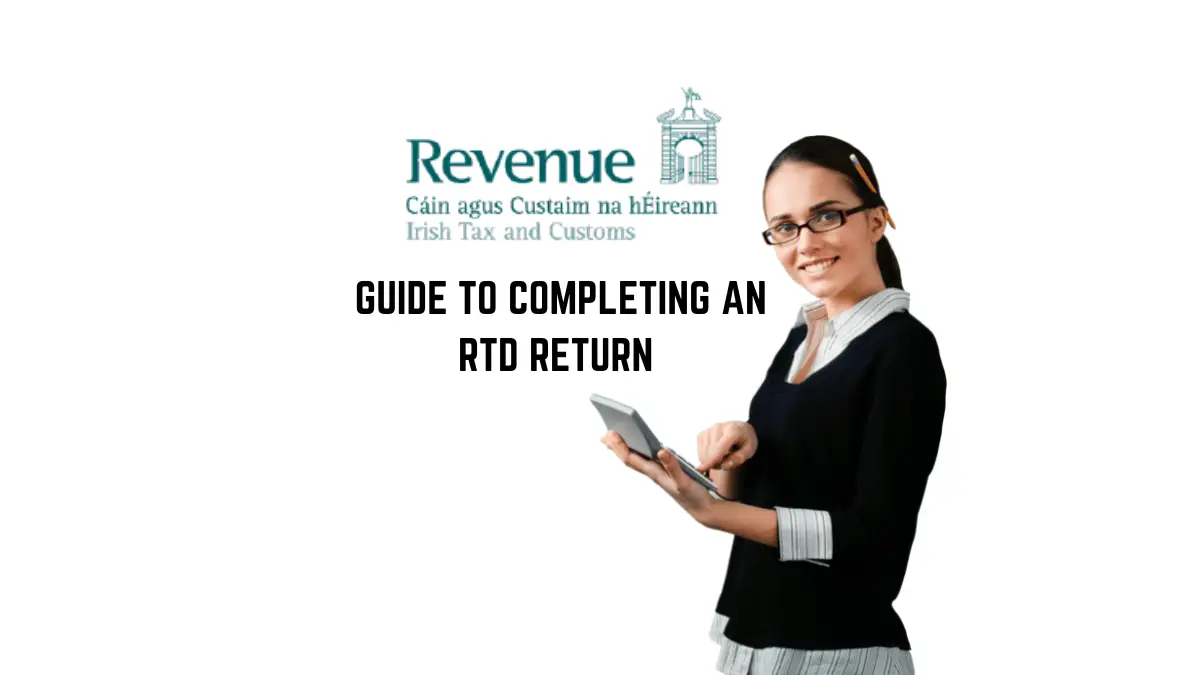You only have to complete a Return of Trading Details (RTD) just once a year, so you’d be forgiven for forgetting to complete an RTD return.
Don’t worry, I have you covered if you need a refresher. I will take you through all the different steps and best practices you should implement.
Steps to completing an Irish RTD Return
Step 1 – On the ‘My Services’ tab, select ‘Complete a Form’, and in the dropdown menu, you can select VAT and RTD as the form you want to complete.

Step 2 – Next up, you need to select the relevant tax period that you want to complete and RTD for.

Step 3 – For those with no Trading details only
If your VAT returns have been Nil all year long, then you may have nothing to declare – if this is the case, then you can select the below option to declare that there is no trade details.

Step 4 – Add the VAT Exclusive figure of all sales made during the year
You may have made many different types of sales at different VAT rates, some may have been 0% exports and others may have been to Irish customers at the standard 23% VAT rate for example.
It is important that you split your Sales into the appropriate tax bucket.
For example, if a business just made one sale during the year to a customer for €1,230 inclusive of 23% VAT.
Then for the purposes of the RTD, I would add in €1,000 which is the VAT-exclusive figure to the 23% bucket referenced in section P1.

Step 5 – Acquisitions from the European Union and Non-European Union
In the following section, you will need to do the same process as step 4 but for all the purchases you have made during the financial period. In this section, you will need to include values of purchases you have made from the EU and also Non-EU countries.
Remember, you must use the VAT-exclusive numbers here also and allocate each amount to the correct tax bucket.

Step 6 – Now split the numbers in step 5 between what is a cost of sale vs general business overhead

An example of a good purchased for resale would be your stock vs a general overhead which could be something like an Electricity bill.
Step 7 – Reconcile the numbers you have used for your RTD back to your annual accounts and VAT returns which you have submitted throughout the year for accuracy.
When you are happy then you can proceed to submit the return.
An RTD will not give rise to any liabilities or refunds due from the Revenue Commissioner. If you find that you have incorrectly submitted your trading details during the year after your reconciliation you can go back and submit an amended VAT return for the relevant period.
Why does the Revenue Commissioner ask us to complete an RTD return?
The Return of Trading Details is almost like an audit tool for the Revenue Commissioners to make sure that the VAT returns you have completed during the year have been completed and accurate.
Who is required to file an RTD?
Your business will only be required to complete a Return of Trading Details (RTD) if it is registered for VAT, and this applies to sole traders, partnerships and limited companies.
When is the deadline for filing and RTD return?
The deadline for your RTD return will depend on the date your current accounting period ends. You have until the 23rd of the month following the end of the accounting period.
For example, if your year-end is the 31st of December 2022, then you have until the 23rd of January to file your Annual RTD.
What are the consequences of not filing your RTD on time?
There could be several consequences for filing your RTD late.
Firstly, Revenue may decide to withhold any tax refunds that you are due to you until you are up to date on all your returns. This could needlessly impact your businesses cashflows.
Secondly, being late with your returns could also raise suspicion with the Revenue Commissioner and may increase the likelihood that your business could be subject to a Revenue Audit (which is not a fun process to be involved in).
Lastly, Revenue may not provide you with a tax clearance certificate which could hamper your attempts at joining any government schemes or obtaining licenses.
What you can do to make your life easier
The main reason complications arise for businesses when completing an Annual Return of Trading Details is that they only do the exercise once a year. There isn’t much time after the year’s end to get the RTD done, which can leave you scrambling to get it done.
When issues arise, you face the arduous task of having to go back through all of the activity for the last year to try and reconcile your VAT returns with the RTD.
The best practice you can start implementing is to periodically prepare RTDs and checks throughout the financial year to make sure you don’t have any nasty surprised at year-end.

Another way to help you ease the burden would be to get, accounting packages like Sage and Quickbooks make it super easy to for your to run a report that gives you all the outputs you need to complete your return.
A word of warning to bookkeepers, these reports are only as good as how accurate the information is that you put into the accounting package daily. Make sure you are adding the correct country addresses, VAT numbers and VAT rates to your invoices.
Disclaimer: This blog post is for informational and educational purposes only and should not be construed as financial advice.







